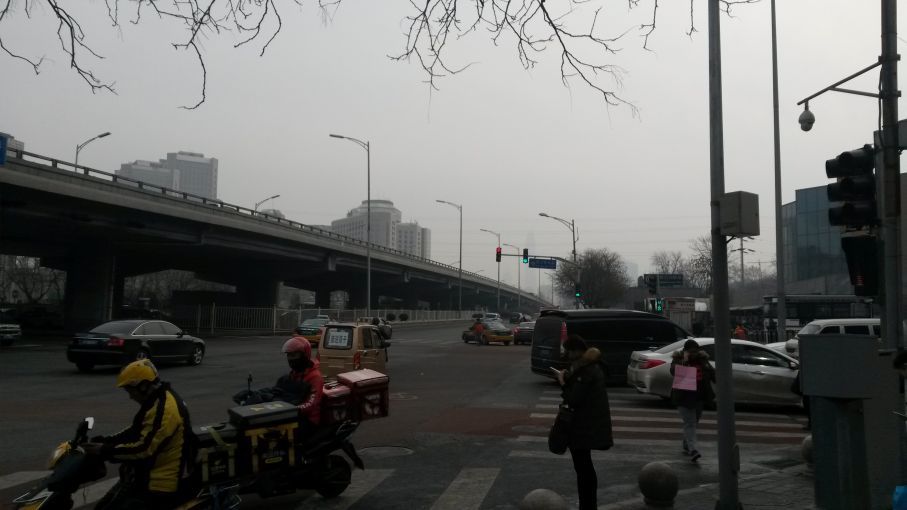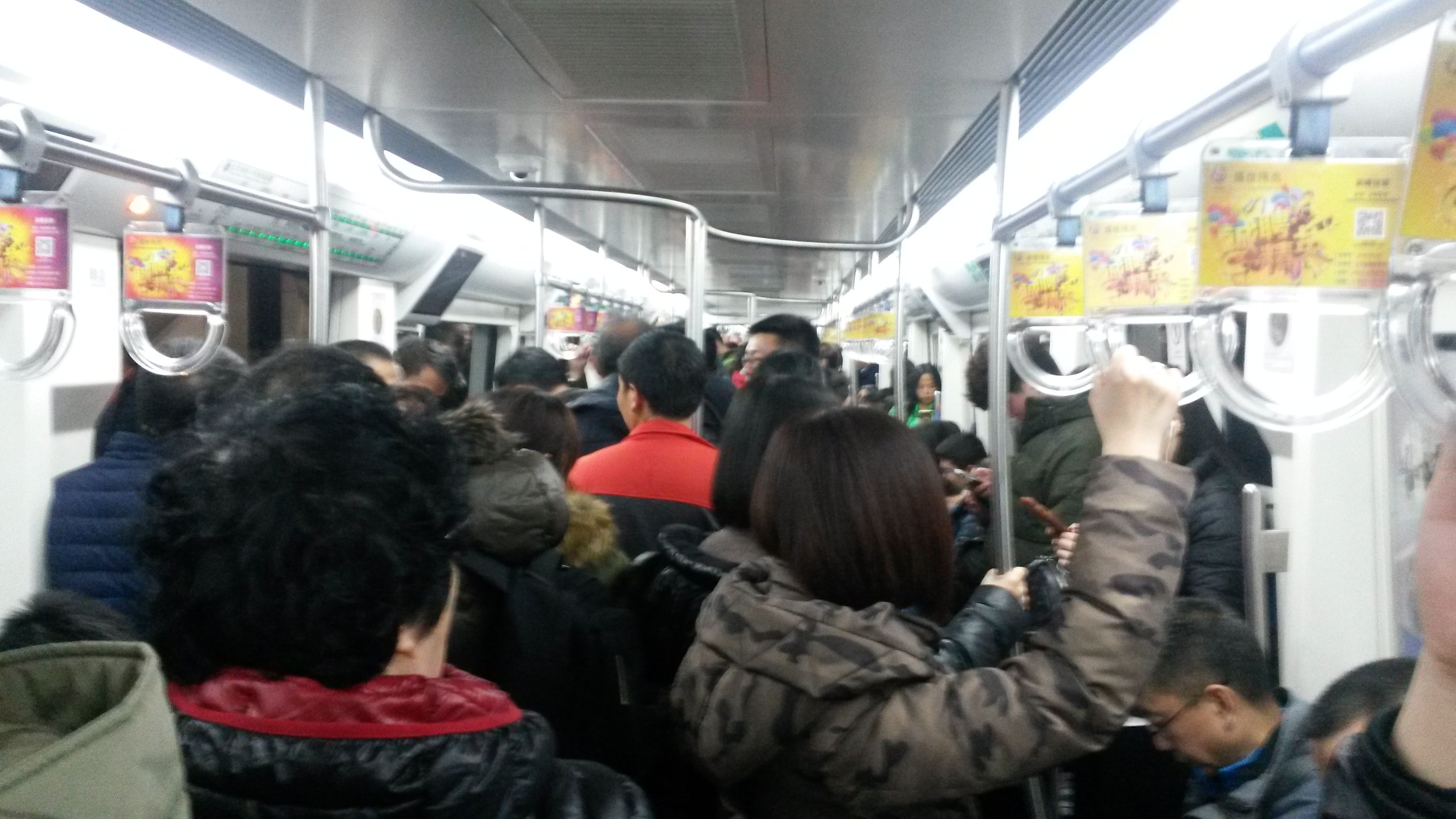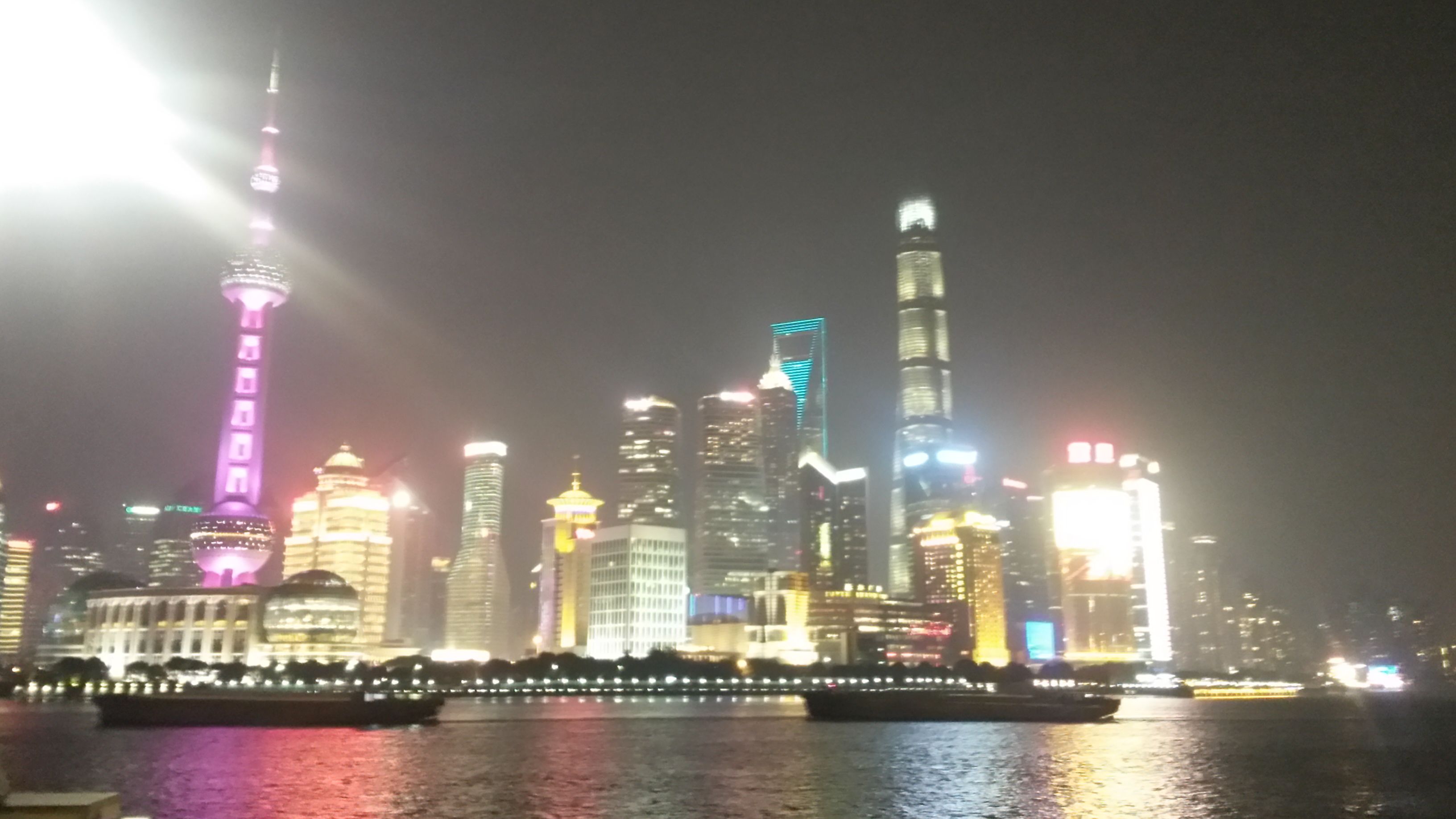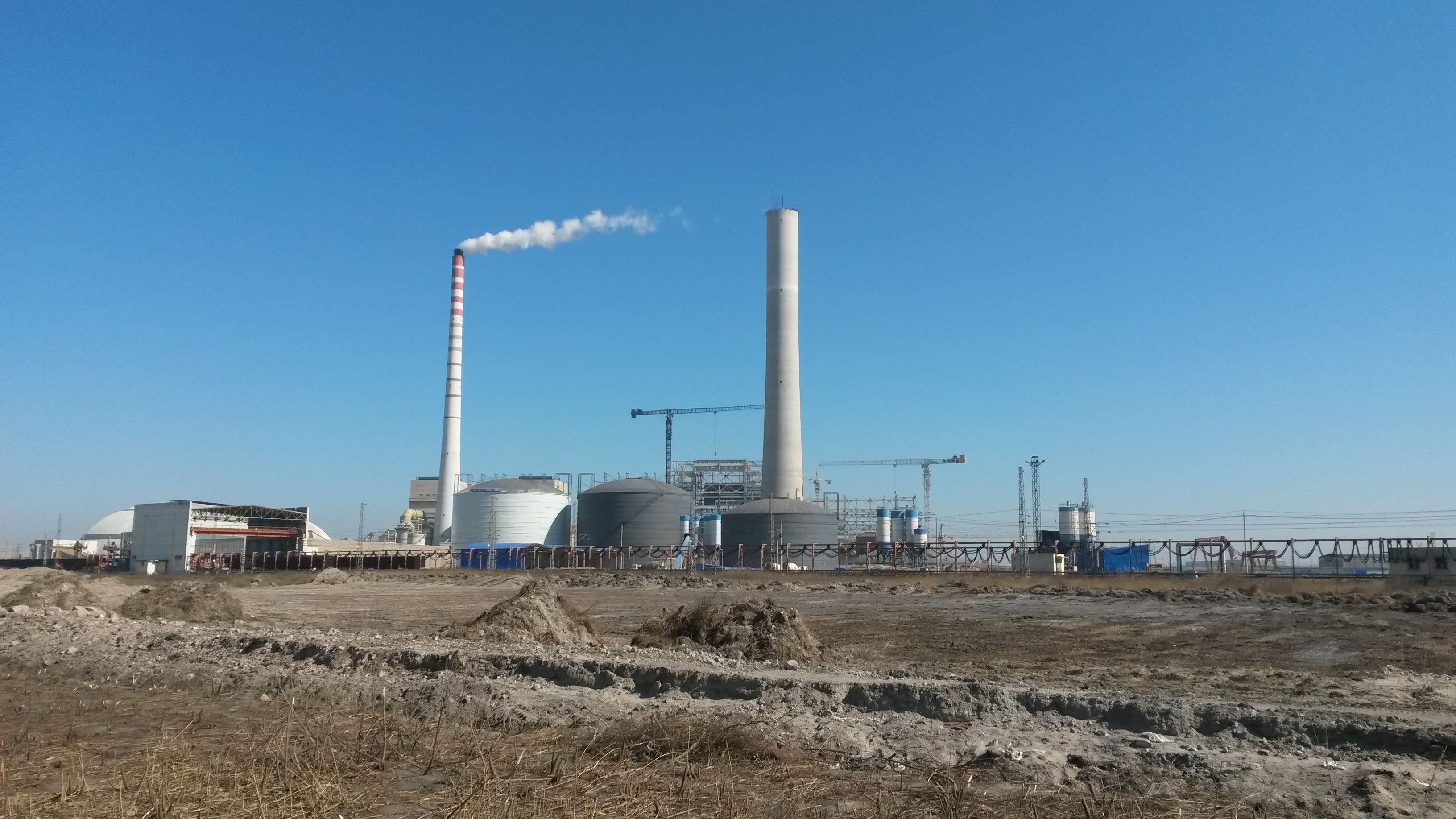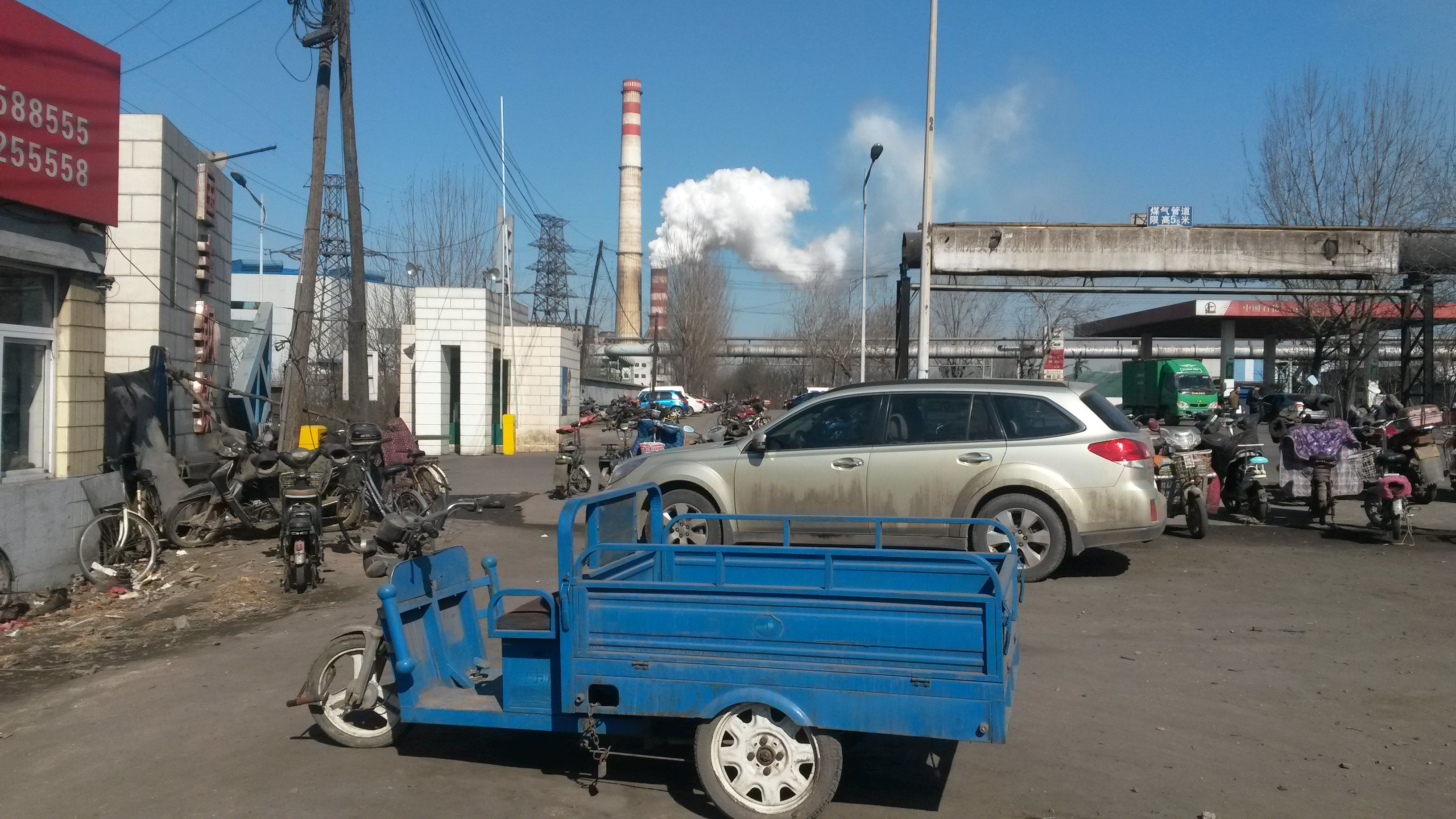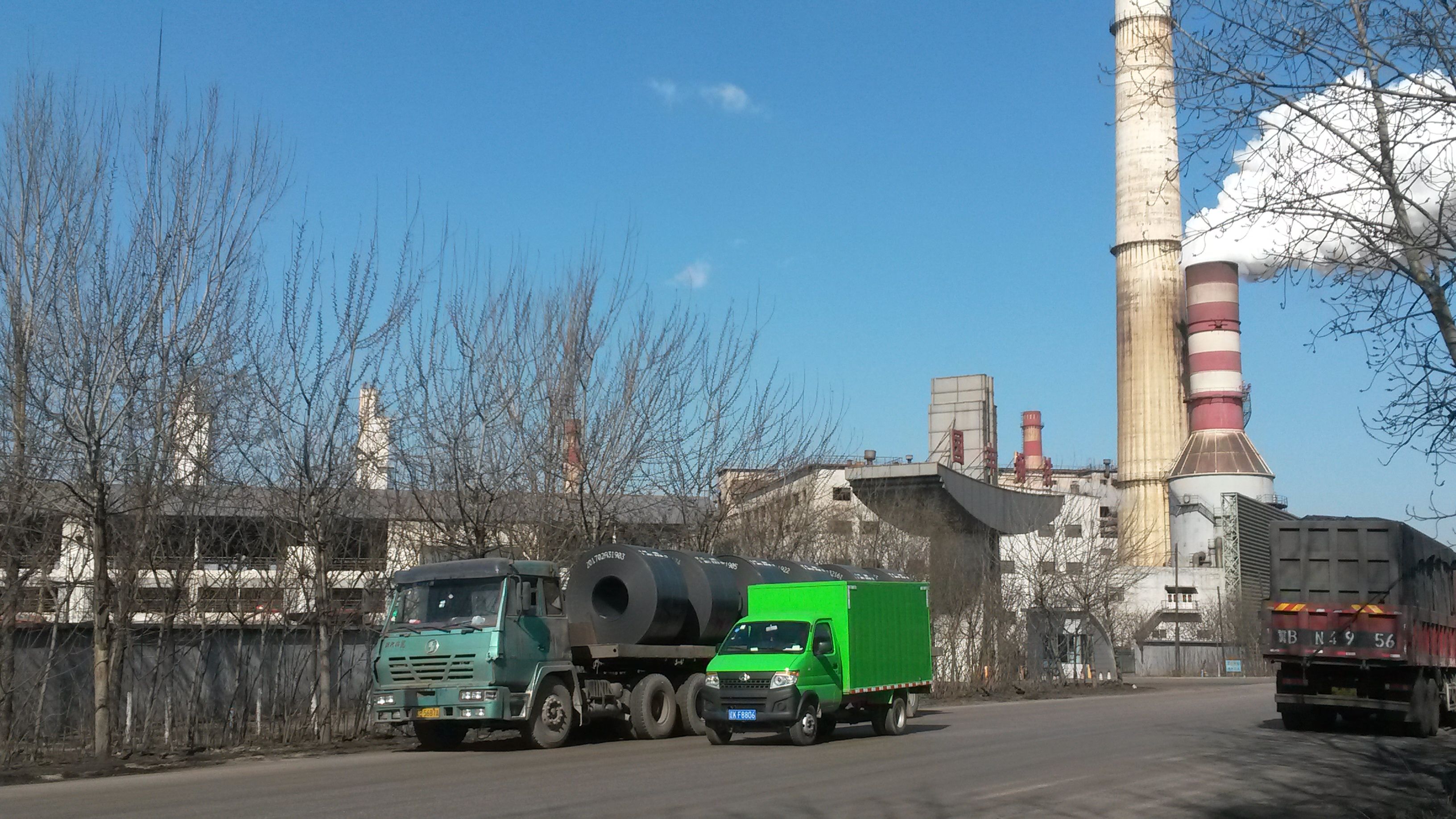If there’s one thing the world knows about air pollution, it’s that China has a lot of it, and I haven’t traveled all the way here to rehash old news. I’ve come to Beijing to tell a different story, an optimistic one, the story of a country beginning to move in a new direction, of the world’s biggest investment in wind and solar energy, and of air quality that is, in fits and starts, getting measurably better. All those things are happening, and the hopeful narrative is real. But you have to squint hard through Beijing’s filthy air to see it. Bleary-eyed after an overnight flight from London, I gaze out of the vast airport, but I can barely make out a thing. Buildings just a few hundred yards away are visible only in outline; everything is shrouded behind a heavy, gray veil. I’ve traveled the world reporting on air pollution, but chance has had it that my visits to many of the worst-polluted places came at relatively clear moments. In China, I’ve landed in the middle of, if not a full-blown airpocalypse, a typically disgusting Beijing winter. I have never seen air this bad, never had to breathe it for days on end, never had to contemplate what the sky-high pollution levels that are the norm here might be doing to my body. I find myself checking the pollution reading online several times a day; depressingly, it seems stuck on red, “unhealthy.”
Beijing is the only place I’ve been where pollution masks are socially acceptable. Still, I suspect I look a little ridiculous in mine. It’s a sort commonly worn by cyclists back home in London, black and somewhat Darth Vaderish. Although I emailed my facial measurements to customer service, as suggested, before ordering, it feels too small, squishing my nose painfully. An instructional video said air leaking out at the top or bottom indicates the seal isn’t right and the mask will do little good. Over and over, I exhale hard to check it, repeating the procedure every time the mask slips, or I shift it in search of a comfortable position. Making matters worse, the Velcro fastener at the nape of my neck gets snagged whenever I put the mask on, or adjust it, on my scarf, my hat, my gloves. Plus, I’ve picked up a cold, and the pressure on my nose makes it drip beneath the mask. That’s the state of affairs as I emerge from the subway into a snowstorm and begin trudging towards an interview. Later, I see a reporter I follow on Twitter has called it “toxic snow.” The Beijing Meteorological Bureau sometimes warns residents to avoid touching the snow here, which can be dangerously dirty. Plenty of it blows into my face, but at least the mask does some good, keeping the poison flakes out of my nose and mouth, even if it’s providing little protection for my lungs.
Beijing’s sparkling subway system, with its English-language signs, makes getting around the city far easier than I’d imagined. Studying the map at the back of my tourist’s guidebook early one morning, I see I’ll have to take three different trains—meaning two underground changes—to get to the office of an air pollution expert I’m meeting, so I allow an hour for the trip. On my way to the platform, though, I decide to double-check my route on the map near the station’s entrance. I’m glad I did. A two-station line extension means the stop I’m heading for is a direct, 10-minute hop from the one I’m standing in. My guidebook is the newest version available, printed less than three years ago, but it’s hopelessly out of date, missing so many new lines and additions that it’s all but useless. It’s one small indicator of the breakneck economic growth that has lifted hundreds of millions of China’s people out of poverty in recent decades and left the country with a set of environmental crises—tainted air, water and food—with which it has only recently begun to reckon.
Shanghai’s air is generally a little better than Beijing’s, but when I head there for a few nights, the smog is even thicker than what I’d been breathing up north. I go for an evening stroll along the Bund, the elevated riverbank famous for its views, but find the gaudy lights of the skyscrapers just across the water are strangely dull—the pictures I snap with my phone look like they were taken through a dirt-smudged lens. When I click on the air quality site I’ve bookmarked, though, I see Beijing is enjoying a clear couple of days while I’m away; sadly, the heavy smog returns to the capital just as I do. Beijing is a city whose sprawling ugliness doesn’t do justice to its vibrancy. Rows of identical concrete apartment towers sit beside gleaming new office buildings and malls, many designed by celebrity architects with avant-garde sensibilities. It’s a city where traffic inches along the half-dozen concentric ring roads that are its main arteries, and where life proceeds on a more human scale along the hutongs, or alleyways, that haven’t been cleared to make way for new development.
It’s clear even to a visitor that social media plays a huge role in Chinese life. Twitter and Facebook are blocked by the elaborate internet censorship system known as “the Great Firewall,” but Weibo and WeChat are popular homegrown equivalents. Several China-based contacts tell me WeChat is so widely used for communication that it would be hard for me to function without it, so I install it on my phone before my trip (800 million users, the app store says). My husband gets it too so we can stay in touch while I’m away, and our nine-year-old daughter quickly hijacks his account, so my interviews with environmental activists are punctuated by the buzzing of my phone, as she logs on before school to send me dancing cartoon characters and chatty voice clips. Using one function that’s particularly handy for a visitor who can’t speak the language or read any street signs, a woman whose office I’m heading to sends me a map showing her current location and mine; everyone in the group she’s created to plan our meeting can watch my progress toward the building. This is China, though, so people need to be careful what they say online. An academic who tracked Weibo discussions of pollution concluded that while posts focused on air quality data or personal health were allowed, comments critical of the government were quickly censored.
Cheap Chinese-made solar panels have changed the economics of renewable power around the world, making energy from the sun cost-competitive with fossil fuels like natural gas and coal. I want to see what this revolution looks like, so I head to a solar panel manufacturing plant in the town of Haining, about an hour and a half from Shanghai. After pulling on a blue lab coat, a shower cap-style hat, and shoe covers, I’m ready for a tour of the factory floor. Although solar panels like the ones in various stages of completion all around me are central to the issues I write about every day, I realize that I’ve never, until now, given a moment’s thought to how they are made, or by whom. Nor have I ever wondered how they work, beyond the general sense that you stick them on a roof and plug them in. “I’m not sure how much you understand the solar cell,” an expert in the manufacturer’s research lab says while showing me around. Laughing a little sheepishly, I suggest he assumes minimal knowledge on my part. “It’s all right,” he continues gamely. “Basically, the solar cell is a semiconductor.” I nod intently and make a mental note to look it up later.
Now that China has achieved a measure of economic security, it is beginning to rethink the balance between economic growth and its people’s health, and to reckon with the fallout of its rapid industrialization.
Editor's note: The last sentence was modified on May 31, 2017.
